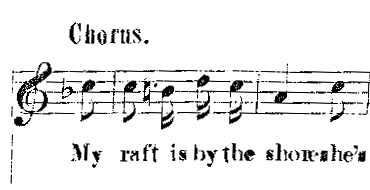music book
for the study
of voice, piano
& choral word chor
a Dickinson Family
Library copy.
EDR 469. copy mss
Houghton Library.
Harvard University
(Cambridge, MS). —
Pianoforte; Renaissance
revival square piano;
floral and scroll carved
legs and apron. Hallet,
dooms Davis & Co., Boston, as it
redeems
redeems
Massachusetts; c.1845.
Brazilian rosewood,
Brazilian rosewood
veneer, spruce, ivory,
iron; height 93.9 cm.,
width 207.0 cm.,
depth 99.0 cm.
E. Dickinson
received this
piano from her
father in 1845,
when she was
fourteen.
Piano stool; pedestal-
based with hexagonal
seat upholstered in
plush; hexagonal
pedestal flares to ring
and base with three ball
and ring feet; screw
mechanism for raising
and lowering seat.
unknown
American
maker;
circa 1845.
Brazilian rosewood,
Brazilian rosewood
veneer, upholstery;
height 49.5 cm.,
diameter 35.5 cm.
This stool most
likely was acquir-
ed by Ed. Dickinson
when he purchas-
ed the pianoforte
for his daughter
Emily in 1845.
a bottle of otto
of rose to go
with it, a sheet
of music, a china
mug with Forget
me not upon it
from S. S.,—
Herself and not her
music was what we
seemed to love
One of the make sweet
mortal musics music.
Jupiter denies Pussy
I stop the birds to listen. goes
These behaviours down
of the year hurt there
almost like music, too,
shifting when
it ease us most.
these core
materials
this mooSic
H. Vendler: ‘The
FAScinat-ing
CHILL that
MUsic LEAVES.’
‘The FAScinAting Anton
CHILL that Rubinstein
MUsic LEAVES.’ eared h
but not to
our Creator —
earthly estrangement
worlds Core. —

shoreshe’s
how? read s

timid &
tumultuous
germ soul
cRealt or I
and now am
I have very
a pia happy
issi played
m o & sang
him hymn Father Father psalm
I want a Piano
I want all together.
I prefer Rosewood
3 pedals—and a
stool. Stun with
Bolts of melODE!
study time in
lyric (choral) time
could our we might
thoughts be in fact shatter
pitched as time with
the lyric’s, the deter
mined voice of our
musings
To Susan Gilbert, 1853:
‘Dear Susie – I send
you a little air – The
‘Music of the Spheres’
The ear
is the
last face.
E. Dickinson
included in
this lettre
a sketch
ascending
musical
notations (scales)
and puffs of
ascending clouds.
This then is a book.
And there are more
of them. Why is
any other book needed?
and the open leaf
of the book makes
the tears come
We hear
after we see,
which to tell
you first is still
my destiny.
open me carefully
Put up my lute!
Lines lyres
sole line
y M sic
Notes to Cantone 5a.
- The Dickinson Cantone. Sharon Cameron, in the remarkable book Lyric Time: Dickinson and the Limits of Genre (1979) writes that the contradiction of lyric speech arises from a new reality emergent in distinct as well as collective (harmonised) voices: ‘At the center of the contradiction rises the lyric’s choral voice, however disguised under the cloak of a customary first-person speaker’ (207).
- Private lyric (accomp. lyre) in contrast to public choral odes (kithara), but both may be deployed as lyric, broadly defined. Dickinson as a choral poet, a social poet in recluse. No ‘pure’ poem.
- Dickinson’s piano. Cantone takes interest in a bound volume of Dickinson’s miscellaneous sheet music. Books: Carolyn Lindley Cooley, The Music of Emily Dickinson’s Poems and Letters: A Study of Imagery and Form (2003). Notation letter to S. Gilbert featured on the 1990 cover of Judy Jo Small’s Positive as Sound: Emily Dickinson’s Rhyme. 3 registers.
– .









